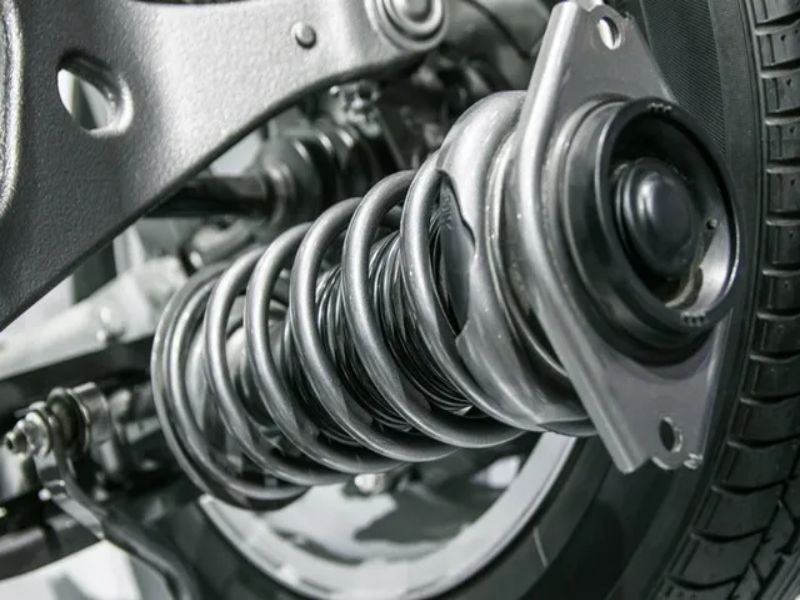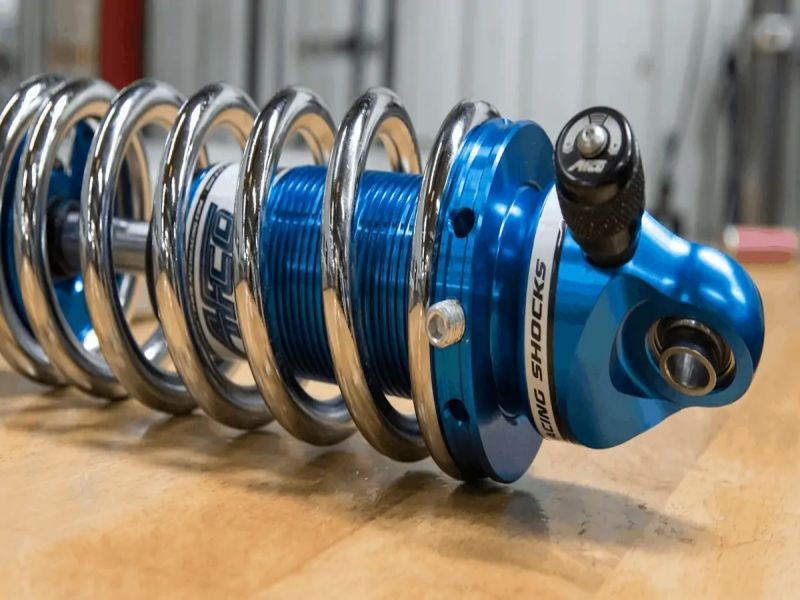Replacing shocks and struts can be dangerous if you don't know what you're doing. Read through these instructions carefully before attempting to dismantle your vehicle to ensure safety and efficiency throughout the project.
Spring Compressor
The shocks and struts on many vehicles are integrated with springs that can pop off and injure you or damage your vehicle if not removed properly. In such cases, you'll need a spring compressor in order to take everything apart safely.
You can rent a spring compressor from your local auto parts store but it's important to understand how to use it. This is the most integral function for replacing shocks and struts and you need to be careful. If you have any doubts about removing the springs, you should consider taking your vehicle to a mechanic instead.
Raise the Vehicle
Once you have all of your parts and tools ready, you should raise your vehicle one side at a time using a car jack. After it's up, place a jack stand behind the front wheel to ensure stability. Otherwise, you can use a lift.
Just make sure the vehicle is secure before attempting to loosen anything or getting under the vehicle.

Remove Old Shocks and Struts
First, you'll need to remove the wheels. Next, using your spring compressor, you'll look for three bolts at the bottom of the shock or strut that holds it in place. Loosen these bolts but don't remove them completely just yet.
On the top of the shock or strut is another bolt inside the engine compartment. You can use an impact wrench with a socket extension to loosen it. Get this loose and finish removing the other bolts and your shock or strut should come free.
Installing New Shocks and Struts
Once the old shocks and struts have been removed, you can simply replace the new ones. Make sure that you tighten all of the bolts securely. You will probably need a torque wrench to do this.
Put the wheels back on the vehicle and you're ready to test it out.
Test Drive
As soon as you have the vehicle put back together completely, you should take it for a test drive to ensure everything is functioning properly. Don't go too fast. A simple slow drive through the neighborhood should give you a feel for how the vehicle handles and stops.
You can wiggle the steering wheel as you drive to test the response of the vehicle. If it's a smooth ride and turning isn't a problem, you're good to go.

Alignment
After replacing shocks and struts, it's also important to get a professional alignment on your vehicle. This should be done within a few days of your completed project in order to maintain your vehicle's safety. Don't wait to have this done or you could end up with other unnecessary repairs later down the line.
Replacing Shocks and Struts
Replacing shocks and struts on your vehicle doesn't have to be a scary process. Just keep these tips in mind when you start to notice your vehicle running a little rough on the road. And, remember, this is not a job for a newbie DIYer.
You should have at least some experience working under the hood of a vehicle before attempting this task. It can be somewhat dangerous if you don't know what to watch out for. But, if you're up for it, it will save you hundreds of dollars compared to taking your vehicle to the mechanic.








